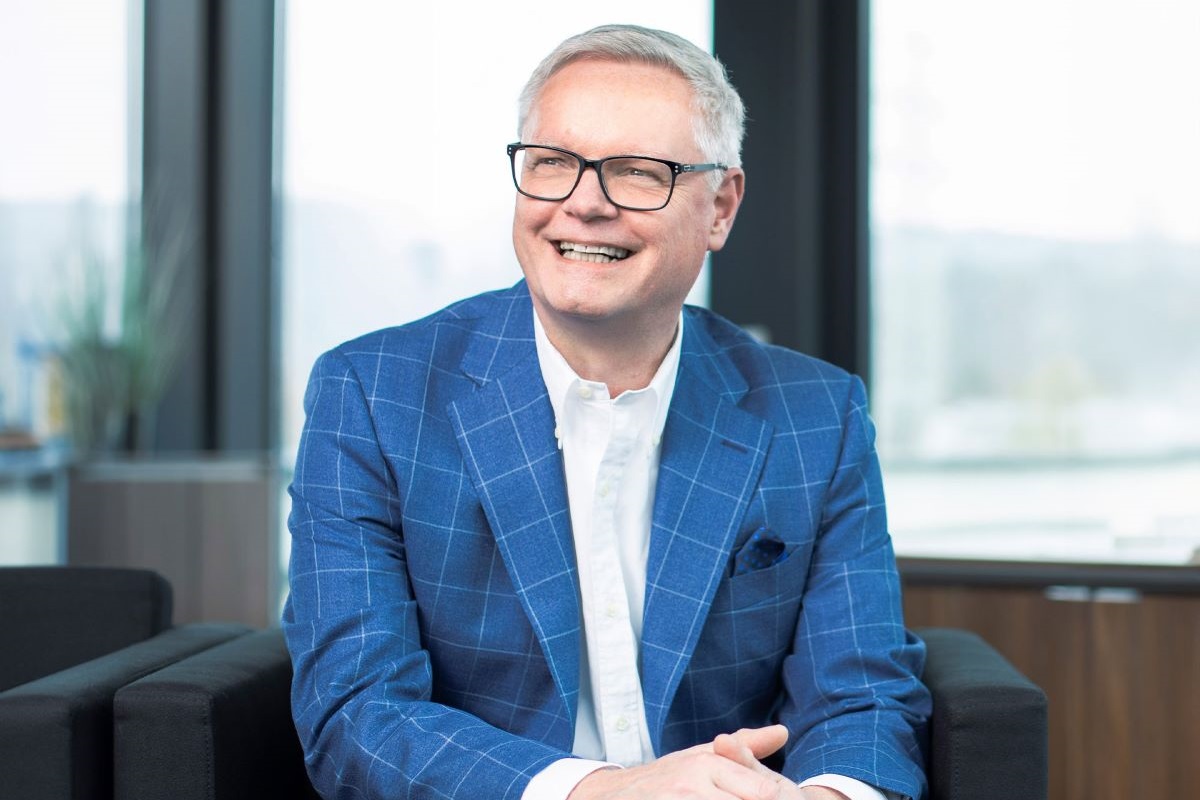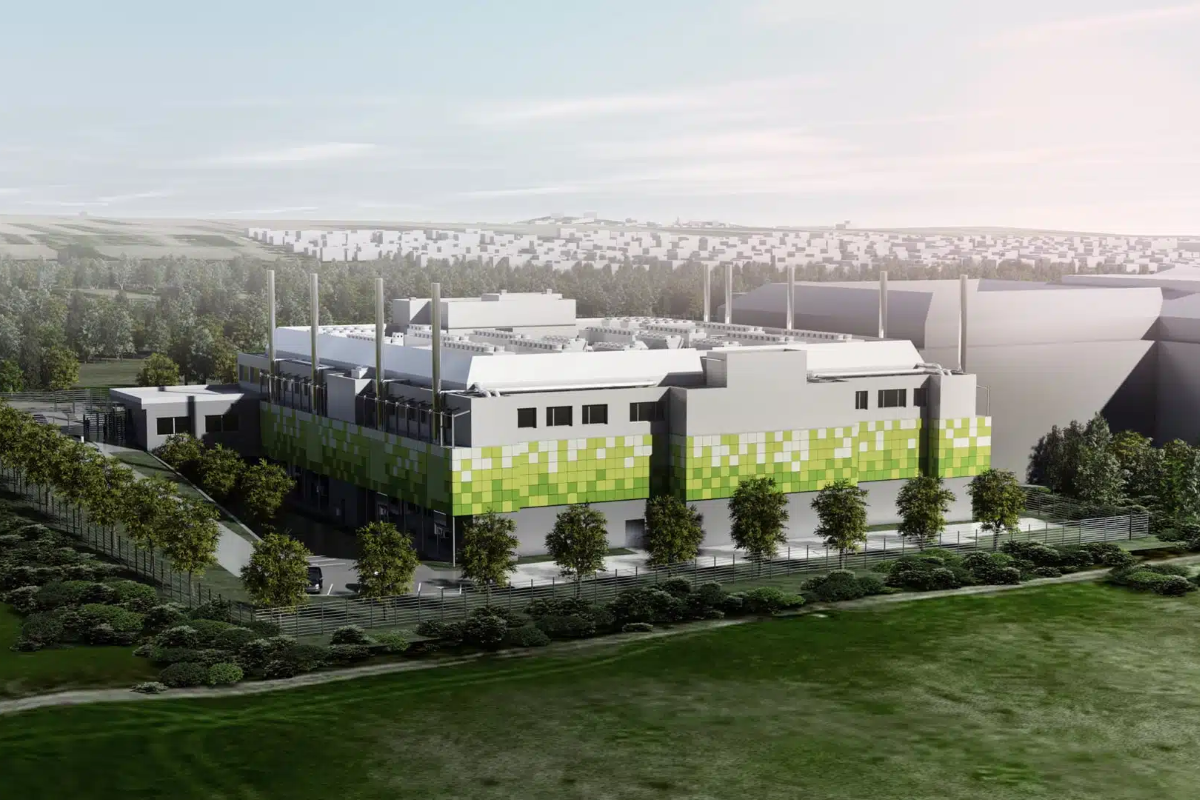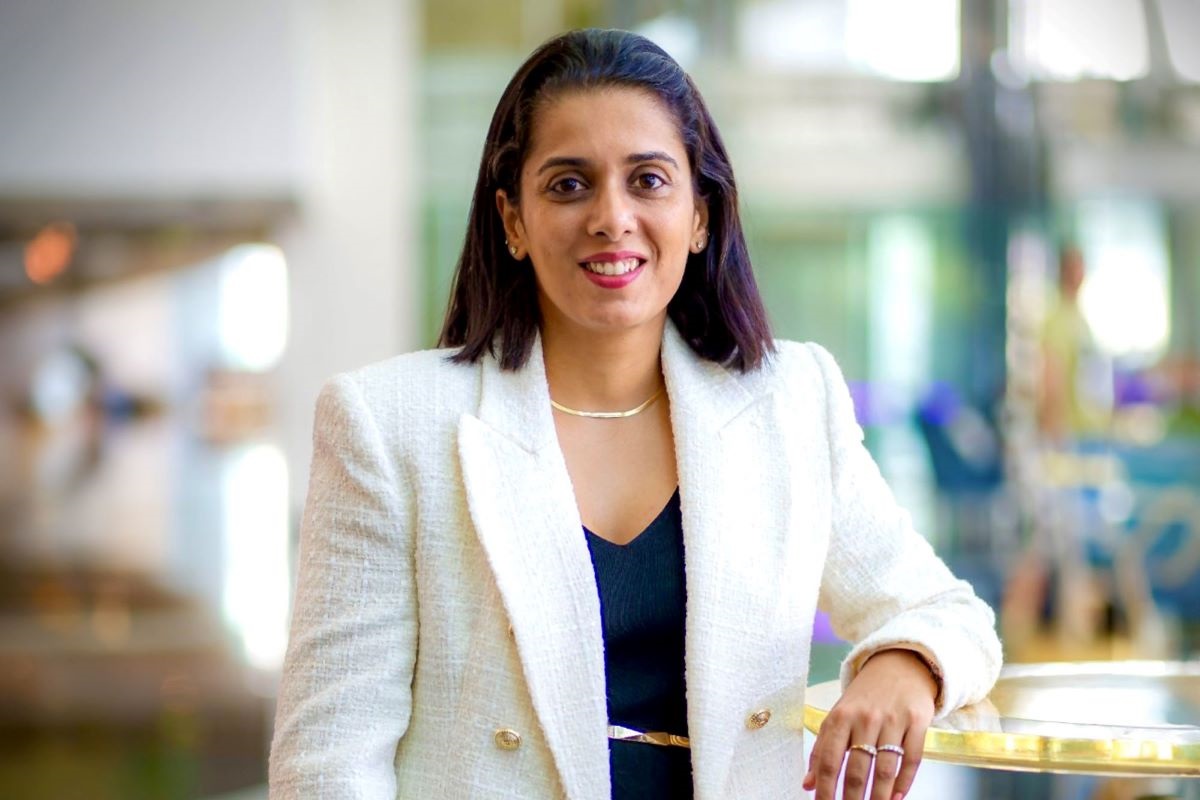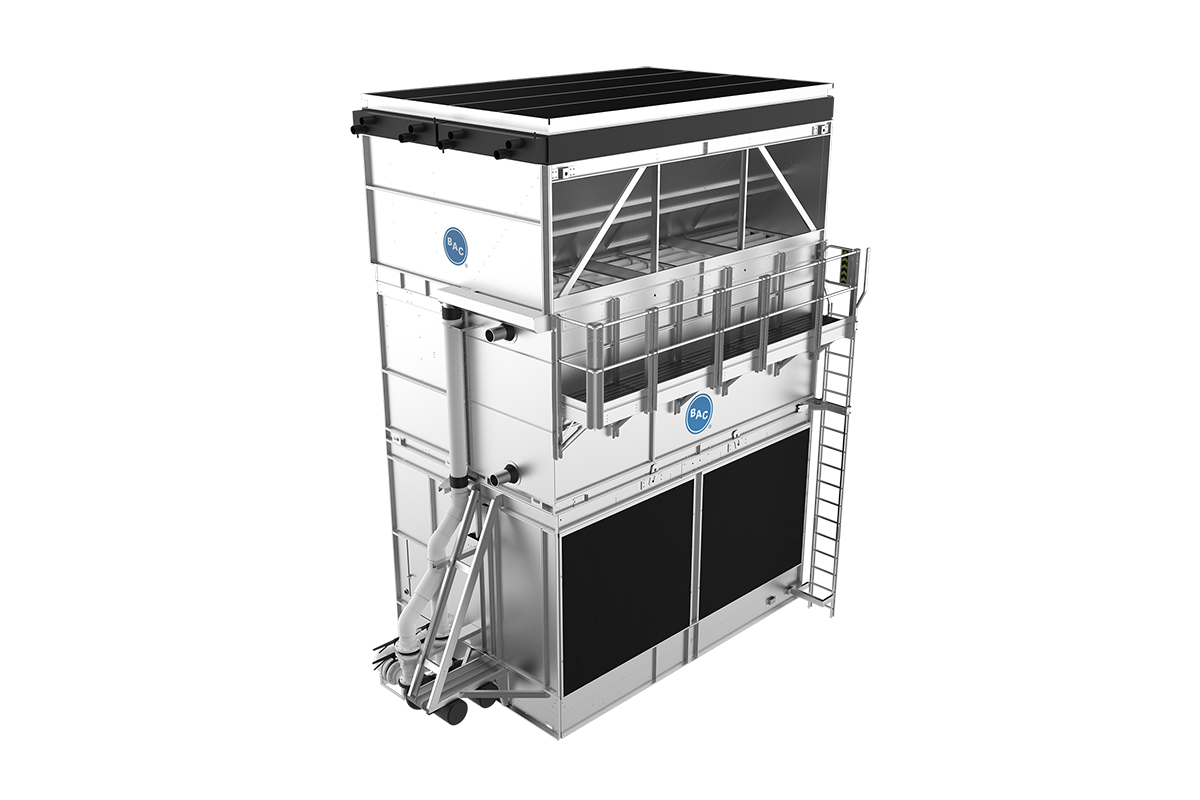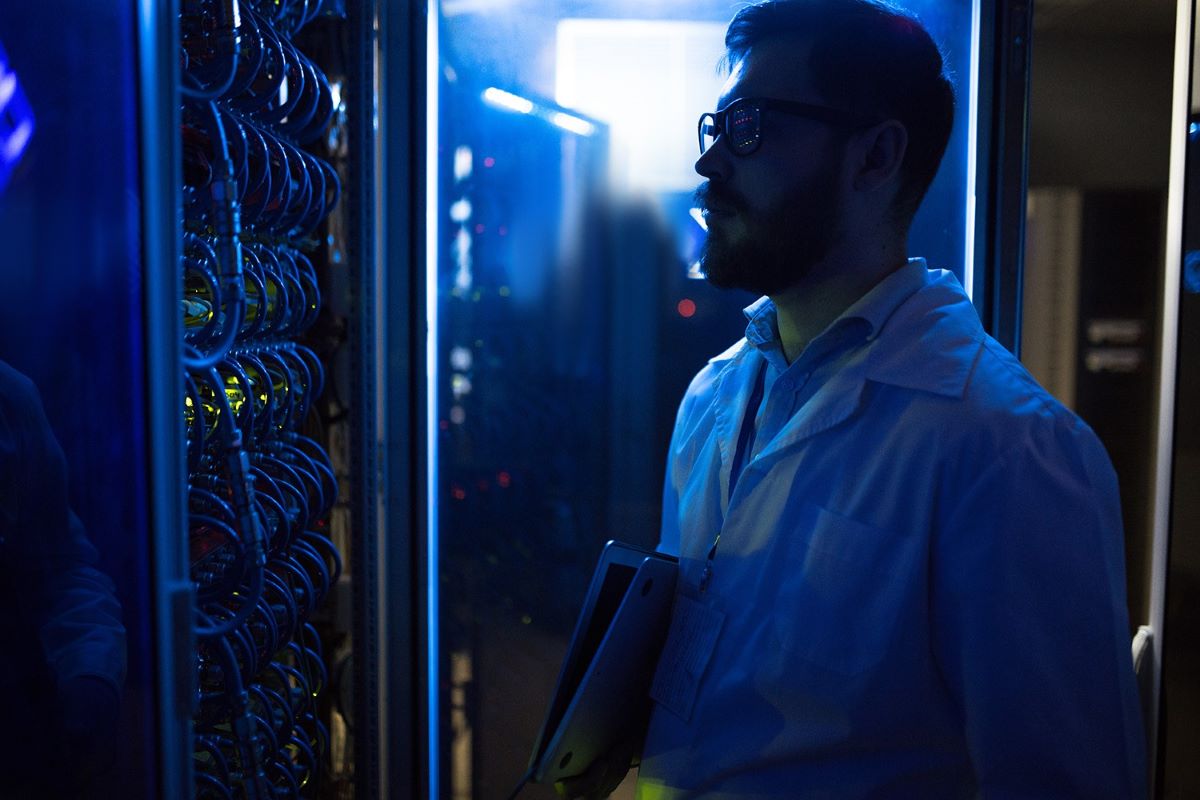Sustainable Infrastructure: Building Resilient, Low-Carbon Projects
Cooling
Data Centres
Infrastructure Management for Modern Data Centres
Liquid Cooling Technologies Driving Data Centre Efficiency
News
Sustainable Infrastructure: Building Resilient, Low-Carbon Projects
DeepCoolAI and Sanmina partner to scale AI infrastructure
DeepCoolAI, an expert in AI infrastructure (including liquid cooling and high density solutions), and Sanmina Corporation, a specialist in advanced manufacturing, have announced a strategic partnership that seeks to revolutionise AI-driven data centres.
Together, the companies are striving to set new standards in efficiency, flexibility and sustainability, catering to the ever-growing demands of AI-driven, high-performance computing environments.
“Our partnership with Sanmina amplifies DeepCoolAI’s mission to pioneer cooling innovations for AI-driven data centres,” says Kris Holla, Founder and CEO of DeepCoolAI. “By integrating our technology, innovation and AI customised solutions with Sanmina’s global footprint and manufacturing expertise, we empower customers to achieve greater efficiency, unparalleled performance and high availability at scale. Together, we are building a future filled with unparalleled possibilities."
Hari Pillai, President, Technology Components Group at Sanmina, comments, “Leveraging Sanmina’s state-of-the-art manufacturing facilities around the world, as well as the depth and experience of our design and manufacturing teams that have successfully brought multiple Open Compute Project (OCP) rack and power solutions to market, this partnership ensures rapid deployment of reliable, high-quality AI solutions tailored to each customer's unique needs.
“From liquid-to-liquid and liquid-to-air Coolant Distribution Units (CDUs) to prefabricated modular high density solutions, DeepCoolAI and Sanmina are equipping data centres with the tools to exceed operational goals. The portfolio also emphasises seamless rack level integration with liquid cooling and high density power, enabling customers to deploy cooling systems with high availability and flexibility at scale.”
“Our strategic alliance with DeepCoolAI brings an unprecedented combination of innovation and scalability to the data centre market. Together, we’re delivering future-proof AI infrastructure solutions that optimise efficiency and sustainability for the next generation of AI driven workloads. We are committed to the fast-growing data centre market with unprecedented scalability and manufacturing capacity to help our customers to turn on data centres faster.”
Innovation to set a new benchmark
AI-powered precision: Innovative liquid cooling and high density technology for sustainability and rapid scalability.
High availability and sustainability at the core: Solutions are designed to meet high availability, stringent environmental standards, aligning with global carbon neutrality goals.
Global reach, local support: Sanmina’s robust supply chain ensures consistent delivery of solutions worldwide, backed by regional expertise and customer support.
Simon Rowley - 21 January 2025
Data Centres
News
Sustainable Infrastructure: Building Resilient, Low-Carbon Projects
NorthC appoints new Managing Director for DACH region
NorthC Group, based in the Netherlands, has appointed Donald Badoux as the company's new Managing Director for the DACH region. Donald assumed the new role on 1 January 2025 and will head up the regional data centre operator's business operations in Germany and Switzerland.
Germany and Switzerland are key markets in Europe given the importance of data centres and fibre-optic networks as the basis for digital and critical infrastructures. Donald has held senior management positions at companies in the German data centre market for several years and will help shape NorthC’s growth and expansion.
In December 2024, NorthC announced its plan to continue expanding with two new data centre locations in Frankfurt and Berlin, Germany. Donald will serve as the Managing Director for the DACH region, playing a crucial role in the company's strategy. Both the German and Swiss markets have significant growth opportunities, as the economy increasingly requires commercial data centres to support key technology developments such as digitalisation, AI, data security, and low latency. The demand for outsourcing, connectivity services, and hybrid cloud solutions is steadily rising among companies across various industries.
Donald Badoux, Managing Director DACH at NorthC, comments, "I’ve been really impressed from the very start by how everyone at NorthC embraces the company's values and the fantastic sense of teamwork that reflects our people-centered culture. It’s great to see how this shows in our interactions with our customers as well."
Referring to the economy, Donald adds, "The important overarching task of making a contribution to the development of digital infrastructure with distributed regional data centres and a committed team at my side motivates me to be back at the helm of a data centre operator and to expand NorthC's good and solid market position in the DACH region."
A key part of the company's mission is to advocate for and implement sustainability in every country in which NorthC operates and builds new data centres. Investments in green energy solutions such as hydrogen-powered emergency systems in the Netherlands, the use of propane as a refrigerant in data centres in Germany and the reuse of waste heat are part of the strategy.
NorthC wants to take a leadership role in the Benelux and DACH region in terms of sustainable data centre operations. With its innovative solution for the use of hydrogen, NorthC is a pioneer. Last year in Germany, NorthC received the ‘Data centre Award’ in the category of green data centre operations in platinum, from Vogel IT Verlag.
"Sustainability is in NorthC's DNA”, states Alexandra Schless, NorthC Group's CEO. “Donald Badoux is ideally qualified to take on this leadership role and to help constructively shape this strategically relevant area. NorthC will benefit from his experience and expertise in renewable energies and their distribution which he gained in his previous management position at an energy supplier in Hesse. With a network of more than 20 regional data centres and the international expertise of our management team, we are well positioned in Europe to provide our customers with personal support and the opportunity to participate in the NorthC Digital Ecosystem.”
For more from NorthC Group, click here.
Simon Rowley - 16 January 2025
Data Centre Build News & Insights
Data Centres
News
Renewables and Energy: Infrastructure Builds Driving Sustainable Power
Sustainable Infrastructure: Building Resilient, Low-Carbon Projects
Schneider Electric advocates for increase in sustainable technology
Schneider Electric, the energy management and automation specialist – and recognised sustainability expert – will play an active role at the World Economic Forum Annual Meeting 2025 (WEF), advocating for more collaboration to increase uptake of energy technologies and automation solutions.
The annual meeting gathers global leaders from all sectors to address the world's most urgent challenges. This year, it emphasises stronger collaboration to address geopolitical dynamics, while stimulating growth and stewarding a just energy transition. Schneider Electric tells us that it is firmly aligned with the WEF’s call to action. The company has long worked across multiple industries and sectors, helping clients and partners reduce environmental impacts along their value chain, while improving efficiency and resilience.
Recently, Schneider Electric released two key reports: The Looming Power Crunch; Solutions for Data Center Expansion in an Energy-Constrained World from its Energy Management Research Center, and Artificial Intelligence for Energy Transition from its Sustainability Research Institute. These reports outline strategies for addressing the challenges of an energy-constrained world and ensuring expansion is both sustainable and economically viable. They also define a strategy for integrating AI seamlessly into our infrastructure to achieve substantial decarbonisation in the energy sector.
Olivier Blum, CEO of Schneider Electric, during the IEA global conference in December 2024 advocated that it is possible to leverage innovations in AI to deliver greater efficiency, resilience, and security simultaneously while ensuring smart and sustainable management.
Schneider Electric now calls for harnessing the momentum around AI to accelerate the adoption of existing technologies such as end-to-end AI data centre solutions or AI powered HVAC in buildings. The company states that this will facilitate a successful energy transition and drive the development of smart industries.
According to a WEF report, reducing energy usage with existing technologies alone could lower energy intensity by 31% and generate annual savings exceeding $2 trillion (£1.6 trillion) by 2030. To deploy technology at scale, Schneider Electric emphasises stronger partnerships and enhancing efficiency at the industry level.
Olivier Blum comments, “Sustainability and economic growth can go hand-in-hand. By forging strategic partnerships, companies can leverage innovation and technology at hand to increase their performance while delivering meaningful impacts and a better future for all.”
From 20-24 January, participants at WEF’s Annual Meeting can engage with Schneider Electric's experts in both public and private panel discussions. These sessions will focus on practical strategies for implementation, return on investment, and real-world case studies that highlight the benefits and successes of sustainable projects.
Company executives in attendance will include:
• Olivier Blum, Chief Executive Officer, Schneider Electric• Jean-Pascal Tricoire, Chairman, Schneider Electric• Aamir Paul, President of North America Operations, Schneider Electric• Barbara Frei, EVP, Industrial Automation, Schneider Electric• Caspar Herzberg, CEO, AVEVA & Member of the Executive Committee, Schneider Electric• Chris Leong, Chief Sustainability Officer, Schneider Electric• Deepak Sharma, Managing Director & CEO, Zone President Greater India, Schneider Electric• Pankaj Sharma, Executive Vice President, Data Centers & Networks, Schneider Electric
For more from Schneider Electric, click here.
Simon Rowley - 15 January 2025
Data Centres
News
Sustainable Infrastructure: Building Resilient, Low-Carbon Projects
Global data centre demand surges despite constraints
Artificial intelligence applications are rapidly expanding across industries, and the global data centre industry plays a critical role in AI adoption and advancement. To meet the exponential data centre demand, the sector will grow at a phenomenal pace in 2025. JLL’s 2025 Global Data Center Outlook explores how AI is not only driving demand but the development of more powerful and efficient data centre infrastructure that balances computing power and sustainability.
Across the hyperscale and colocation segments, an estimated 10 GW is projected to break ground globally in 2025, while 7 GW will likely reach completion. Based on this current pace of under construction and planned developments, the global data centre market will likely expand at a baseline 15% CAGR through 2027 – with the potential to reach 20%. Rapid expansion brings challenges, including demand outstripping supply and electricity development constraints in some markets. The industry also faces numerous opportunities such as the emergence of new technologies providing novel pathways for sustainability.
“The pace of AI innovation is not slowing down, and the data centre industry must continue to adapt,” says Jonathan Kinsey, JLL EMEA Lead and Global Chair, Data Centre Solutions. “AI’s transformative power demands have already reshaped our world, yet its most significant and enduring effect may lie in how we rise to meet the substantial energy demands required to fuel this technological revolution. The results will fundamentally reshape data centre design and operation.”
Next-generation AI requirements
At the core of the AI revolution is the rapid advancement in semi-conductor technology. Over the past two years, GPUs have become substantially more powerful, leading to higher rack densities ranging from 40 kW to 130 kW per rack, with future chips projected to reach an astounding 250 kW per rack.
GPU innovation presents a significant hurdle: managing the heat generated by densely packed, energy-intensive GPUs. The necessity to keep this tech cooled and load variability stable, combined with new power usage effectiveness (PUE) regulations, will shift thermal management strategies toward liquid cooling as the standard for new data centre developments. In the future, immersion cooling will become commonplace as GPUs surge past 150 kW.
Most new data centres are being designed to house a combination of both AI and traditional workloads. Though a significant driver, even optimistic adoption scenarios suggest that AI will represent less than 50% of data centre demand in 2030, with traditional, lower-intensity workloads like data storage and cloud-based applications comprising most of the demand.
“While not every data centre is or will be a specialised AI facility, all data centres – new and existing – can benefit from more energy efficient operations and improved technology integration,” comments Andrew Green, JLL Regional Data Center Practice Lead, Asia Pacific. “Data centre operators must contend with the demand for massive power needs while satisfying the need for more energy efficient facilities. AI is transforming data centre management through predictive maintenance applications, which optimise energy usage, lead to longer lifespans for equipment and result in less downtime.”
Alternative energy solutions
Forecasts suggest that global data centre energy demand could double over the next five years. While data centres consume large quantities of power, they are one component of the complex global power challenge. Furthermore, data centres are expected to represent only about 2% of global electricity consumption in 2025. A variety of other factors like increasing EV adoption, machinery electrification and rising power consumption in developing countries also contribute to growing power demand.
Since data centres are often clustered together in metropolitan areas, significant bottlenecks in delivering power to new developments persist in some of the largest global data centre markets like Northern Virginia, Tokyo and London. Additionally, these clusters are unevenly distributed across the globe, resulting in some countries and regions where data centres account for a considerable proportion of total electricity demand.
“Data centre developers evaluate markets based on the availability of a few key aspects, including power, land, connectivity and tax incentives,” notes Andy Cvengros, JLL Co-Lead US Data Center Markets. “Scarcity is only half of the power story; transmission is the other part. The time it takes to erect transmission lines and substations to connect new data centres to the grid can be up to four years or more in some markets. Both established and emerging markets will see higher development levels in 2025, along with more developers exploring other energy solutions like natural gas and fuel cells.”
Being looked at as carbon neutral, large-scale nuclear power is emerging as a preferred alternative to traditional power, particularly for AI and high-performance computing applications. Companies worldwide are developing small modular reactors (SMRs), which, while still in the early stages, could offer a modular and scalable green energy power source at a fraction of the cost of large-scale nuclear. Though commercial deployment in the US is unlikely until 2030 for a variety of reasons detailed in the report, JLL anticipates more SMR announcements this year.
Record financing for data centre development
Investor appetite for data centres will remain strong through 2025 due to demand for compute power and data storage, low supply due to power scarcity, attractive returns and growing excitement around AI’s potential. JLL anticipates data centre development financing will have another record year in 2025, while global data centre trading volume is likely to moderately increase in 2025.
“Data centre activity has exploded over the last few years, with much of the demand geared toward single-tenant ground-up construction,” states Carl Beardsley, US Data Center Leader, JLL Capital Markets. “Significant barriers to entry exist for new investors based on the amount of capital required as well as a longer development cycle. In 2025, we expect many opportunities for core investors to recapitalise the single-tenant data centres that continue to be built.”
M&A investment volume and megamergers will likely slow, but JLL expects an increase in joint ventures in 2025, particularly in developing countries as industry firms partner with regional groups to help navigate the local political, regulatory and business landscapes.
Despite challenges, including supply constraints and electricity limitations in some markets, the outlook for the data centre sector remains highly favourable, JLL states. It says that the industry is poised for continued growth, driven by AI adoption, increased data processing demands and ongoing technological advancements.
JLL’s team of dedicated technical experts are trained and experienced in every phase of the data centre lifecycle to help its customers scale, optimise and maintain efficiencies in their data centre strategies.
For more from JLL, click here.
Simon Rowley - 13 January 2025
Data Centres
News
Sustainable Infrastructure: Building Resilient, Low-Carbon Projects
Uncategorised
Frankfurt data centre meets EU taxonomy criteria
maincubes, a developer and operator of data centres in Europe, and part of the DTCP portfolio, has announced that its newly constructed FRA02 data centre in Frankfurt aligns with the EU Taxonomy standard. This milestone underscores maincubes’ commitment to stringent environmental stewardship, regulatory compliance, and creating long-term value for investors and clients alike.
The EU Taxonomy is the classification framework to determine whether an economic activity is considered environmentally sustainable in the context of the European Green Deal. The framework sets rigorous performance standards for projects to ensure substantial contribution to climate goals, such as emissions reduction and energy efficiency. In addition, the alignment approves that a project does no significant harm (DNSH) to other environmental objectives and does not infringe on human rights.
Verified by Northshore, a specialist in data centre sustainability assessments, FRA02 meets stringent criteria for energy efficiency and emissions management, bolstering its credibility and minimising risks through validated compliance with the EU Taxonomy‘s sustainability criteria.
By adhering to the EU Taxonomy’s high standards, maincubes establishes with FRA02 a benchmark for sustainability and operational excellence in the data centre industry. The data centre’s innovative design and energy-efficient operations serve as a model for the industry under increasing pressure to lower emissions and improve sustainability.
“Achieving EU Taxonomy alignment for FRA02 underlines our commitment to sustainability and regulatory excellence. This important milestone contributes to shaping a more sustainable future for the data centre industry, while enhancing trust and transparency for our customers and stakeholders,” says Martin Murphy, Chief Operating Officer at maincubes.
For more from maincubes, click here.
Simon Rowley - 13 January 2025
Data Centres
News
Sustainable Infrastructure: Building Resilient, Low-Carbon Projects
Michigan state continues to support data centre growth
The Green Building Initiative (GBI) has congratulated Michigan leaders on the finalisation of Senate Bill 237 (SB 237) as a Public Act on 30 December 2024. The new law continues Michigan’s commitment to supporting critical data centre growth, while holding data centre projects accountable to community sustainability priorities.
As part of its requirements, the law requires sustainable and resilient design, construction, and operation of these facilities through GBI’s Green Globes certification, among others, within three years of operation.
“Michigan joins a number of states and cities who are committed to sustainable data centre development, demonstrated by the passing of SB 237,” says Vicki Worden, GBI President & CEO. “Green Globes is ideally suited to educate, evaluate, and improve data centre operations, creating more efficient and resilient mission critical facilities that are positively contributing to communities.”
Senate Bill 237 extends the sunset on a use and sales tax exception from 2035 to 2050, or 2065 if the data centre is located on a brownfield site or a location that was used primarily as a power plant for electricity. Data centres may pursue Green Globes New Construction for projects with less than 12 consecutive months of utility data or Green Globes for Existing Buildings for buildings with 12 or more months of utility data for compliance.
To date, nearly 16 million square feet of data centres have been certified or are pursuing Green Globes certification in 17 states and Canada. GBI offers personalised guidance and support throughout the assessment process, multiple compliance pathways for a rigorous, not rigid approach, and matches the data centre industry speed to market. In addition to recognition in SB 237, Green Globes certification serves as a compliance pathway in several tax abatement policies throughout the US, including those in Arizona, Washington, and Illinois. Green Globes certification also contributes to an improved GRESB score, a global benchmarking system, in increasing demand by stakeholders.
Companies including Aligned Data Centers, Compass Datacenters, CyrusOne, Equinix, Powerhouse, and Vantage Data Centers have achieved Green Globes certification to demonstrate their commitment to and accountability for sustainability.
For more from The Green Building Initiative, click here.
Simon Rowley - 8 January 2025
Data Centres
News
Sustainable Infrastructure: Building Resilient, Low-Carbon Projects
Schneider Electric makes key data centre appointment
Schneider Electric has announced the appointment of Nirupa Chander as Senior Vice President, Secure Power & Data Centres, International Operations.
In the role, Nirupa will lead a division of more than 700 professionals, supporting customers and partners in their digital transformation journeys and achieving their sustainability goals in an all-electric world across international zones, including MEA, EAP, Japan, India and South America.
“Understanding the complex and nuanced interplay between energy and data will be key to navigating the future of our industry,” says Pankaj Sharma, Executive Vice President, Secure Power, Data Centres & Global Services, Schneider Electric. “Nirupa’s experience and insight in this area will be invaluable in the ongoing digitalisation of the energy sector and our increasingly digital world.”
A veteran of the energy industry, Nirupa has extensive experience in energy grids, micro-grids, and automation, as well as project management, engineering, service and business development.
Beginning her career with India’s largest industrial electrical company, Nirupa progressed from project engineering roles through project management, and country manager roles with major engineering firms (such as ABB and Hitachi Energy) in Singapore and Australia before joining Schneider Electric in 2022 as Vice President of Power Systems for the Middle East and Africa.
Commenting on her appointment, Nirupa comments, “Early career experiences with controls and automation brought me into IT infrastructure, showing me how energy and data are increasingly intertwined. Working on microgrids highlighted the complexity of balancing the grid with energy storage technology and renewables - insights now applicable to creating sustainable data centres.
“It is exciting to see the strong coupling between data and energy, and I am excited about applying my knowledge and skills to this evolving field, especially with the anticipated growth in artificial intelligence (AI) and its potential impact on the industry.”
Nirupa holds a degree in Engineering from Gujarat University in Electronics and is a certified project management professional. She is a graduate of leadership programmes from both the Wharton School and INSEAD Executive Education.
For more from Schneider Electric, click here.
Simon Rowley - 3 January 2025
Data Centre Infrastructure News & Trends
Innovations in Data Center Power and Cooling Solutions
News
Sustainable Infrastructure: Building Resilient, Low-Carbon Projects
Feature - Sustainable data centre cooling
In many data centres, water-cooled chillers are paired with an open or closed-circuit cooling tower for heat rejection. Other options include dry coolers, hybrid fluid coolers and adiabatic fluid coolers. It is beneficial to evaluate all heat rejection options to optimise energy and water consumption.
Baltimore Aircoil Company (BAC) was approached by a high-performance computing customer with 160MW operating power to provide a more sustainable cooling solution. They had previously used open cooling towers with water-cooled chillers, so BAC worked with the customer to understand its major challenges and needs.
The following were identified as critical priorities:
- Minimise water usage while balancing energy consumption to support customer sustainability efforts- Provide cooling for an increasing heat load in a smaller footprint- Meet system water temperature requirements without chillers at high loads and varying outside conditions
BAC analysed the IT capacity, space requirements, operating power, and location weather data, and then evaluated fully evaporative, hybrid, and adiabatic solutions. Based on the analysis, BAC recommended a chillerless system utilising the HXVTM hybrid cooler. The HXV’s packaged evaporative and dry cooling features offered the water saving and energy efficient solution the customer desired. The factory assembled unit also allowed for easier maintenance and serviceability for the operations team. They were able to easily access the cold-water basin, prime surface coil and drive system due to the crossflow design, large doors, and internal access platforms. Additionally, the customer could perform faster inspections of the spray distribution system while the unit was in operation.
The HXV Hybrid Cooler not only addressed all of the customer’s challenges and needs, but it also reduced annual energy costs and improved system efficiency. The HXV Hybrid Cooler helped achieve an estimated power usage effectiveness (PUE) of 1.136.
The HXV incorporates three modes of operation. It has the benefits of evaporative, adiabatic, and dry cooling in a water saving and energy efficient solution. It maintains peak system performance for a variety of applications where water is scarce, water costs are high, uptime is critical, or plume is a concern. Furthermore, it is an ideal solution where space is limited. The HXV hybrid cooler offers the following benefits:
- Up to 70% water savings compared to an open cooling tower due to a high dry switch point and more dry operating hours- Year-round 'sensible cooling' with the dry coil to maximise water savings- On average, 25% water savings even on a design day through sensible cooling- Up to 60% lower energy costs compared to air cooled systems due to evaporative cooling and BAC’s innovative combined flow design- Increased operational and layout flexibility with balanced water and energy savings- Highest reliability, and water saver mode eliminates plume abatement- Up to 25% less maintenance than traditional fluid coolers due to dry operation and crossflow design- Up to 70% chemical savings due to dry operation
In this installation, the HXV Hybrid Cooler met the customer’s need for a reasonable first cost while significantly reducing both water consumption and operating costs. The HXV heat rejection benefits compared to open cooling towers with water-cooled chillers are:
- 71% reduction in annual WUE- 86% reduction in installed peak power- 52% reduction in annual operating cost (energy and water)
For more from BAC, click here.
Simon Rowley - 2 January 2025
Data Centres
News
Sustainable Infrastructure: Building Resilient, Low-Carbon Projects
Duos partners with Texas city for data centre development
Duos Technologies Group, through its operating subsidiaries Duos Edge AI and Duos Energy Corp, has announced a partnership with the Pampa Energy Center.
This collaboration aims to develop high-density data centre development parks powered by up to 500MW of natural gas self-generation, supplemented by up to 200MW of wind turbine generation and alternative fuel sources for redundancy. This 500+ acre project will transform Pampa Texas’s infrastructure, create jobs, and drive technological and economic growth. The move will also establish Pampa as an epicentre to address the national shortage of High-Density Data Centre (HDDC) capacity.
Building on its expertise in deploying adaptive and scalable brick and mortar data centres, Duos Edge AI is streamlining project timelines, optimising operations, and delivering bespoke infrastructure solutions for Pampa to support four 50MW HDDCs. In partnership with Fortress Investment Group, Duos Energy will ensure reliable energy for the HDDCs by providing up to 500MW of natural gas self-generation, bolstered by wind turbine generation and alternative fuel sources for enhanced redundancy. The first 50MW HDDC is planned to be operational by the end of 2025. Duos says that this integrated approach will ensure sustainability and provide resilience to support Pampa's growing technological and economic needs.
Doug Recker, President and Founder of Duos Edge AI, says, “The US faces a tough challenge in alleviating the current data centre demand shortfall, as well as building data centres with alternative energy sources. This collaboration helps to accomplish these challenges, as well as defining a new direction for the Texas panhandle and setting up Pampa to be a new technology leader in the High-Density Data Centre landscape. We’re excited to help set Pampa on an innovative path forward and create new jobs and economic development in the region through this collaboration.”
Chuck Ferry, CEO of Duos, comments, “Duos Energy Corporation, partnered with Fortress Investment Group, recently signed a definitive agreement to manage 850MW of mobile gas turbines acquired from APR Energy. This strategic partnership with Pampa allows us to begin the deployment of these highly sought-after power generation assets starting in early 2025, and will provide a bridge to a long-term permanent power plant. We are honoured to contribute to Pampa’s economic growth and bright future.”
David Dorman, Duos Energy’s Director of Commercial Operations, remarks, “We are looking forward to collaborating with the Pampa Energy Center to deliver mission-critical power to this High-Density Data Centre development. Duos Energy’s turn-key solution will provide rapid-dispatch bridging power, seamlessly transitioning to a permanent facility. We are honoured to contribute to the future economic growth and development of Pampa, Texas.”
Glennette Goode, President of the Pampa Energy Center, adds, “The partnership with Duos Edge AI, Duos Energy, and the Pampa Energy Center allows for the transformation of Pampa into a dynamic hub of innovation, enhanced connectivity, and economic strength. Our board has long focused on the need to diversify our commercial and industrial base. Located in the central United States and within the heart of the wind energy sector, we are poised for significant economic growth. This partnership is the first step in a journey to long-term prosperity in Pampa, Texas.”
For more from Duos, click here.
Simon Rowley - 20 December 2024
Data Centres
News
Sustainable Infrastructure: Building Resilient, Low-Carbon Projects
Data centre consumption set to double, Finning reports
Finning UK & Ireland, a dealer of Cat machines, engines, equipment, and power products, is urging data centre operators to accelerate the take-up of sustainable backup power solutions in response to projected surge in energy consumption for the sector.
According to Deloitte, global data centre electricity consumption is expected to double to 1,065 terawatt-hours (TWh) by 2030 – equivalent to 4% of total global energy consumption – driven by power-intensive generative AI applications. The increasing strain on power grids – coupled with the rapid expansion of data centres – highlights the urgent need for reliable, sustainable backup power solutions.
“The data centre industry faces unprecedented challenges as we approach 2025,” explains Graham Scandrett, Head of Electric Power Sales at Finning UK & Ireland. “The growth of AI and cloud computing is driving increases in power consumption. And although the sector is making strides towards sustainability, the demand for reliable backup power solutions remains paramount. This creates an urgent need to balance environmental responsibilities with operational resilience.
“Hydrotreated Vegetable Oil (HVO) is emerging as a practical solution for data centre operators looking to reduce their carbon footprint while maintaining the reliability of traditional backup power systems. With whole-lifecycle carbon emissions approximately 70% lower than conventional diesel, HVO offers an immediate pathway to sustainability without compromising on performance or reliability.”
Graham continues, “We’re seeing a growing interest from operators to use sustainable fuels during both the testing phase and in operation as an alternative to diesel to achieve incremental reductions in the total carbon intensity of fuels while maintaining optimal backup power performance. The flexibility of HVO as a drop-in replacement, combined with its stability and storage advantages over other alternative low-carbon fuels, positions it as one of several strategic choices for data centre operators.
“As the data centre industry continues to expand, operators are increasingly focused on developing robust and sustainable backup power strategies. The next few years will be critical for the data centre industry as it balances rapid growth with environmental responsibilities. Forward-thinking operators are already exploring mixed-fuel strategies and investing in compatible generator systems to future-proof their operations. Success will depend on choosing the right partners and technologies to navigate this transition, particularly as we see the convergence of AI-driven demand growth and increasingly stringent environmental regulations.”
Finning supports data centre operators with comprehensive power solutions that enable the transition to more sustainable backup power options while ensuring uninterrupted operations and system reliability.
For more from Finning, click here.
Simon Rowley - 19 December 2024

Head office & Accounts:
Suite 14, 6-8 Revenge Road, Lordswood
Kent ME5 8UD
T: +44 (0)1634 673163
F: +44 (0)1634 673173

